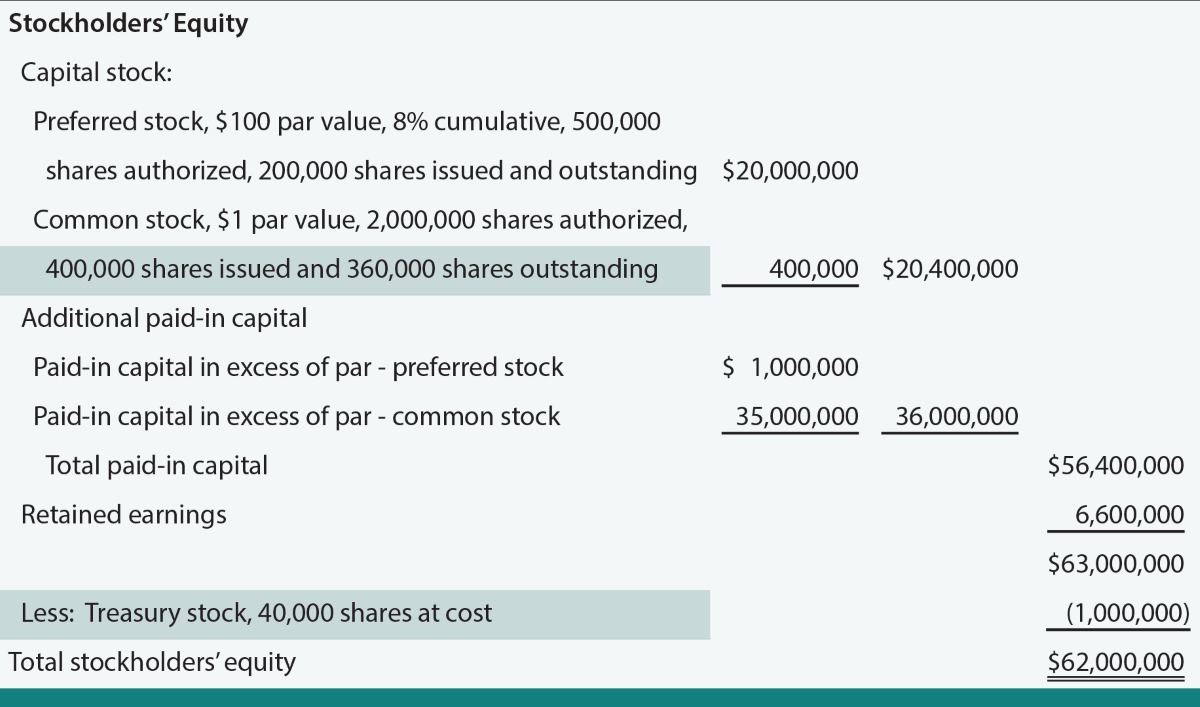

Finance
What Does Reinstatement Mean In Insurance?
Published: November 21, 2023
Reinstatement in insurance refers to the process of restoring a policy that has lapsed or been canceled due to non-payment. Understand the implications and importance of reinstatement in the world of finance.
(Many of the links in this article redirect to a specific reviewed product. Your purchase of these products through affiliate links helps to generate commission for LiveWell, at no extra cost. Learn more)
Table of Contents
Introduction
When it comes to insurance, there are a plethora of terms and concepts to grasp. One such term is “reinstatement.” You may have come across this term while reading your insurance policy or discussing coverage options with your agent. But what exactly does reinstatement mean in the context of insurance?
Reinstatement refers to the process of restoring an insurance policy or coverage that has lapsed or been canceled. It is essentially a way to revive your insurance policy and regain the benefits and coverage it provides. Reinstatement is primarily applicable in situations where policyholders failed to pay their premiums on time or if their policy was terminated due to non-compliance with certain policy terms and conditions.
Insurance providers offer reinstatement as a way to give policyholders a second chance to maintain coverage and protect themselves against unforeseen events and risks. The specific rules and procedures associated with reinstatement vary depending on the type of insurance and the individual policy. Understanding the reinstatement process can help you make informed decisions when it comes to maintaining or reactivating your insurance coverage.
In this article, we will delve into the definition of reinstatement in insurance, explore the reasons why it is necessary, discuss the process involved, highlight the significance of reinstatement clauses in insurance policies, provide examples of reinstatement situations, and emphasize the importance of maintaining active coverage. Whether you are a policyholder seeking to reinstate your insurance or simply curious about insurance terminologies, this article will equip you with the necessary knowledge to navigate the world of insurance reinstatement.
Definition of Reinstatement in Insurance
In the context of insurance, reinstatement refers to the act of restoring an insurance policy to its active state after it has lapsed or been canceled. It involves reviving the policy as if it were never interrupted, providing the policyholder with renewed coverage and benefits.
When an insurance policy lapses, it means that the policyholder has failed to make the required premium payments within the specified grace period. As a result, the coverage provided by the policy is terminated, leaving the policyholder exposed to potential risks and losses. However, insurance providers understand that policyholders may sometimes face financial challenges or oversight, and therefore offer reinstatement options to grant them another chance to maintain coverage.
The process of reinstating an insurance policy typically involves paying any outstanding premiums, fees, or penalties that may have accrued during the policy’s lapse. In some cases, insurance providers may also require the policyholder to fulfill certain conditions or provide updated information to ensure that the coverage is appropriately reinstated.
Reinstatement is not applicable to all types of insurance policies. For example, some policies, such as term life insurance, may not offer a reinstatement option once the policy has lapsed. It is crucial to carefully review your insurance policy to determine if reinstatement is available and what specific requirements and limitations apply.
It is important to note that reinstatement is distinct from renewing an insurance policy. Renewal refers to the process of extending the existing policy for another term, typically at the end of its term or contract period. Reinstatement, on the other hand, reactivates a lapsed policy, bringing it back into force as if it were never interrupted.
In summary, reinstatement in insurance is the process of restoring a lapsed or canceled policy to its active state by satisfying any outstanding payment obligations and meeting any stipulated conditions set by the insurance provider. By reinstating a policy, policyholders regain the protection and benefits offered by their insurance coverage, ensuring their financial security and peace of mind.
Reasons for Reinstatement
There are several reasons why policyholders may seek reinstatement of their insurance coverage. Life is unpredictable, and circumstances may arise that lead to a lapse or cancellation of insurance. Here are some common reasons why reinstatement is pursued:
- Financial Difficulties: One of the primary reasons for policy lapse is financial difficulties. Life events such as job loss, unexpected medical expenses, or other financial emergencies can make it challenging to keep up with premium payments. Reinstatement provides policyholders with an opportunity to restore their coverage once their financial situation stabilizes.
- Inadvertent Non-Payment: Sometimes, policyholders may miss premium payments unintentionally due to oversight or administrative errors. Reinstatement allows them to rectify this situation by paying any outstanding premiums and penalties, ensuring continuous coverage.
- Change in Circumstances: Policyholders may experience changes in their life circumstances that cause a lapse in coverage. For example, if someone temporarily stops driving their car, they may let their auto insurance policy lapse. However, if they decide to start driving again, they can reinstate their policy to ensure they have the necessary coverage.
- Policyholder Error: In some cases, policyholders may erroneously cancel their insurance policy, only to realize later that they still require coverage. Reinstatement allows them to rectify their mistake and regain the protection provided by the policy.
- Continuity of Coverage: Reinstatement is also beneficial for policyholders who want to maintain the continuity of their coverage. If a policy lapses, it may result in a loss of certain benefits or discounts that were tied to the previous policy tenure. By reinstating the policy, policyholders can ensure a seamless transition and retain any privileges associated with continuous coverage.
These are just a few examples of the reasons why policyholders may opt for reinstatement of their insurance coverage. It is important to note that each insurance provider may have specific guidelines and requirements for reinstatement, so it is essential to review your policy and contact your insurance company to understand the process fully.
Process of Reinstatement
The process of reinstating an insurance policy can vary depending on the insurance provider and the specific policy terms. However, there are some general steps that are typically involved in the reinstatement process:
- Contact Your Insurance Provider: The first step to initiate the reinstatement process is to contact your insurance provider. This can typically be done by phone, in-person, or through online channels. Inform them of your intention to reinstate your policy and inquire about the specific requirements and procedures.
- Payment of Outstanding Premiums: In most cases, reinstatement requires the payment of any outstanding premium amounts that may have accrued during the lapse period. This can include the missed premium payments, any penalties or fees, and possibly interest charges. The insurance provider will provide you with the exact amount to pay and the acceptable methods of payment.
- Submission of Required Documents: Depending on the insurance provider and the type of policy, you may be required to provide certain documents as part of the reinstatement process. These documents may include proof of identity, updated contact information, or any other relevant information requested by the insurer to update their records.
- Assessment of Eligibility: Once you have made the necessary payments and submitted any required documents, the insurance provider will assess your eligibility for reinstatement. They may review your payment history, evaluate any previous claims, and determine if you meet the reinstatement criteria outlined in your policy.
- Confirmation of Reinstatement: If your application for reinstatement is approved, the insurance provider will confirm the successful reinstatement of your policy. They will provide you with a reinstatement confirmation letter or documentation that officially reinstates your coverage. It is important to review the confirmation details to ensure that all the necessary information is accurate.
It is crucial to note that the reinstatement process should be initiated as soon as possible after a policy lapse occurs. Insurance providers may have specific timeframes within which reinstatement is allowed, so prompt action is essential to ensure eligibility.
Additionally, it is important to review the terms and conditions associated with the reinstatement of your policy. Some policies may have limitations on the number of times reinstatement is permitted or may impose additional requirements for repeated reinstatements.
By following the proper reinstatement process and meeting the necessary obligations, policyholders can restore their insurance coverage and once again enjoy the protection and benefits provided by their policy.
Reinstatement Clauses in Insurance Policies
Insurance policies often contain reinstatement clauses that outline the specific conditions and requirements for reinstating coverage after a lapse or cancellation. These clauses provide clarity on the reinstatement process and any limitations or restrictions that may apply. Here are some key points to understand about reinstatement clauses:
- Time Limitations: Reinstatement clauses typically specify a specific time period within which reinstatement is allowed. This is known as the reinstatement period. Once this period expires, reinstatement may no longer be an option. The length of the reinstatement period can vary depending on the insurance policy and provider, so it is important to be aware of this timeframe.
- Payment Obligations: Reinstatement clauses usually require policyholders to make the necessary payments to cover any outstanding premiums, penalties, fees, and possibly interest that may have accrued during the lapse period. These payments are typically required to be made in full to reinstate the policy.
- Additional Requirements: In some cases, the reinstatement clause may include additional requirements that must be met before reinstatement is granted. This could involve providing updated information, undergoing a health assessment for certain types of insurance, or fulfilling any specific conditions outlined in the policy.
- No Coverage During Lapse: It is important to note that during the period of insurance lapse, there is no coverage provided by the policy. This means that any claims or events occurring during the lapse period will not be covered. Reinstatement only restores coverage from the date of reinstatement forward.
- Limitations on Repeated Reinstatements: Some insurance policies may have limitations on the number of times reinstatement is permitted. Repeated lapses and reinstatements may result in additional requirements or even the denial of further reinstatement opportunities. It is crucial to review the policy’s reinstatement clause for any such limitations.
Reinstatement clauses are important to understand as they impact the process and feasibility of reinstating an insurance policy. Familiarize yourself with the specific clause in your policy and consult with your insurance provider if you have any questions or concerns about the reinstatement process.
Remember, timely action is crucial when it comes to reinstatement. Initiating the process promptly can help ensure eligibility and minimize the risk of extended periods without coverage.
Examples of Reinstatement in Insurance
Reinstatement in insurance can occur across various types of policies and situations. Here are a few examples to illustrate how reinstatement works in practice:
- Health Insurance: Let’s say you have a health insurance policy, and unfortunately, you missed a premium payment due to a financial setback. As a result, your policy lapsed. However, you were able to rectify the situation by making the outstanding payment and contacting your insurance provider within the specified reinstatement period. They would reinstate your policy, and you would once again have access to medical coverage and benefits.
- Auto Insurance: If you have auto insurance and your policy lapsed because you forgot to pay the premium on time, you can typically reinstate it by making the missed payment within the required timeframe. However, if the policy has been canceled for a more extended period, the insurance provider may require additional steps, such as vehicle inspection, before approving reinstatement.
- Life Insurance: Many life insurance policies offer a reinstatement option. Let’s say you missed a premium payment on your term life insurance policy, resulting in a lapse. If you contact your insurance provider and pay the outstanding premium amount within the stipulated reinstatement period, they would typically reinstate your policy, ensuring that your beneficiaries have the intended death benefit protection once again.
- Homeowners Insurance: If you missed paying your homeowners insurance premium and your policy lapsed, reaching out to your insurance provider within the reinstatement period can allow you to reinstate your coverage. You would likely need to make the missed premium payment and possibly provide an updated appraisal of your property for accurate coverage assessment.
- Business Insurance: Business insurance policies, such as general liability or property insurance, can also be reinstated if a lapse occurs. If you miss a payment or fail to comply with policy requirements, promptly contacting your insurance provider and fulfilling the necessary obligations can reinstate your coverage, providing protection to your business once again.
These are just a few examples, and the specific requirements for reinstating an insurance policy may differ depending on the insurance provider, policy type, and individual circumstances. It is important to review your policy documents and contact your insurance company directly to understand the precise details and steps involved in the reinstatement process for your specific policy.
Importance of Reinstatement in Insurance
Reinstatement plays a crucial role in the insurance industry, offering policyholders the opportunity to regain coverage and protect themselves against potential risks and losses. Here are some key reasons why reinstatement is important in insurance:
- Continuous Protection: Reinstatement allows policyholders to maintain continuous coverage, ensuring that they remain protected against unforeseen events and risks. Without reinstatement, a lapse in coverage could leave individuals and businesses vulnerable to financial hardships resulting from accidents, damage, or other covered events.
- Financial Security: Insurance coverage provides financial security, helping policyholders recover from unexpected incidents without incurring significant out-of-pocket expenses. Reinstatement ensures that policyholders can continue to benefit from this financial protection, providing peace of mind and mitigating potential financial burdens.
- Preserving Policy Benefits and Discounts: Reinstating a policy allows policyholders to retain the benefits, features, and discounts associated with their original coverage. This can include access to special services, premium discounts, or loyalty rewards that are tied to a continuous policy tenure. Reinstatement allows policyholders to maintain these privileges and potentially save on future premiums.
- Avoiding Coverage Gaps: A lapse in insurance coverage can leave individuals and businesses vulnerable to coverage gaps. These gaps can result in incidents or losses not being covered, potentially leading to financial strain. Reinstating the policy bridges the coverage gap and ensures that policyholders are protected moving forward.
- Compliance with Legal and Contractual Obligations: In certain situations, maintaining insurance coverage is legally or contractually required. For example, auto insurance and homeowners insurance are often mandatory, and failure to maintain coverage can result in legal consequences or breaches of contractual agreements. Reinstatement allows policyholders to fulfill their obligations and remain compliant with these requirements.
Reinstating an insurance policy is not only essential for the individual or business seeking coverage but also benefits the insurance industry as a whole. It promotes responsible insurance practices, ensuring that policyholders have a safety net in place and reducing the potential burden on public resources in the event of accidents or disasters.
It is important, however, for policyholders to understand the terms, conditions, and limitations associated with reinstatement. Familiarizing yourself with the reinstatement clause in your policy and staying proactive in maintaining your coverage can help avoid lapses and potential challenges in the reinstatement process.
Overall, reinstatement is a valuable opportunity for policyholders to restore their insurance coverage, providing the security and benefits necessary to navigate life’s uncertainties and protect against potential risks and losses.
Conclusion
Reinstatement is a crucial aspect of insurance that allows policyholders to restore their coverage after a lapse or cancellation. It provides a lifeline to individuals and businesses who may have faced financial difficulties, administrative errors, or other unforeseen circumstances that caused their coverage to lapse. By following the proper reinstatement process, policyholders can regain the financial protection and benefits offered by their insurance policies.
The process of reinstatement typically involves contacting the insurance provider, paying any outstanding premiums, fees, or penalties, and fulfilling any additional requirements outlined in the policy. It is important to review the reinstatement clause in your policy and initiate the process within the specified timeframe to ensure eligibility for reinstatement.
Reinstatement holds significant importance in insurance as it ensures continuous protection against potential risks and losses. It helps policyholders maintain financial security and avoid coverage gaps that can leave them vulnerable to unexpected expenses. Reinstatement also allows policyholders to preserve the benefits, discounts, and privileges associated with their original coverage.
Additionally, reinstatement helps policyholders meet legal and contractual obligations, ensuring compliance with insurance requirements that may be mandated by law or contract terms. Through the reinstatement of insurance policies, individuals and businesses can fulfill their responsibilities and contribute to a more sustainable insurance industry.
In conclusion, understanding the concept of reinstatement and the process involved is crucial for policyholders. By being aware of the reinstatement options available to them and taking proactive measures to maintain coverage, individuals and businesses can safeguard their financial well-being and enjoy the peace of mind that comes with having adequate insurance protection.
Remember to review your insurance policy, contact your insurance provider, and act promptly in the event of a lapse to explore reinstatement as an option. Reinstating your insurance coverage allows you to stay protected, ensuring that you are prepared for the uncertainties of life.














